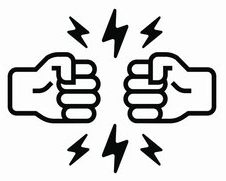Where are lipid oils found?
Where are lipid oils found?
Hydrolysable and Non-hydrolysable Lipids Fats and oils are composed of triglycerides, made up of glycerol (1,2,3-trihydroxypropane) and 3 fatty acids to form a triester. Triglycerides are found in the blood, and stored in fat cells.
What are sources of fat oil?
Sources of cooking fats and oils Saturated fats are mostly found in animal products such as butter, cheese, whole milk, ice cream, lard and fatty meats. They are also found in some vegetable products, such as coconut, palm and palm kernel oil. Saturated fats are solid at room temperature.
What are the main sources of lipids?
Food Sources of Lipids Commonly consumed oils are canola, corn, olive, peanut, safflower, soy, and sunflower oil. Foods rich in oils include salad dressing, olives, avocados, peanut butter, nuts, seeds, and some fish. Fats are found in animal meat, dairy products, and cocoa butter.
What is a lipid formed from?
Triacylglycerols, commonly called triglycerides (known as lipids), are formed by combining glycerol with three fatty acid molecules. The basic structure of triglyceride is shown in Fig.
What is difference between lipid and fat?
Lipids are a broad group of macronutrients which plays a major role as a structural molecule and an energy source. The main difference between lipids and fats is that lipids are a broad group of biomolecules whereas fats are a type of lipids. Fat is stored in the adipose tissue and under the skin of animals.
What is lipid test used for?
As a panel test, it measures multiple substances, including several types of cholesterol. The lipid panel is used in both children and adults to evaluate risk of cardiovascular diseases like heart disease, heart attack, and stroke.
What is lipid and its function?
A lipid is any of various organic compounds that are insoluble in water. They include fats, waxes, oils, hormones, and certain components of membranes and function as energy-storage molecules and chemical messengers.
What is the major site of lipid storage in the body?
Lipid storage (especially sphingolipid and unesterified cholesterol) is found in liver and spleen.
Which is the most important part of a lipid molecule?
Here, we’ll look in greater detail at some of the most important types of lipids, including fats and oils, waxes, phospholipids, and steroids. A fat molecule consists of two kinds of parts: a glycerol backbone and three fatty acid tails.
What kind of sample is needed for lipid analysis?
The sample preparation required in lipid analysis depends on the type of food being analyzed (e.g. meat, milk, margarine, cookie, dairy cream), the nature of the lipid component (e.g. volatility, susceptibility to oxidation, physical state) and the type of analytical procedure used (e.g. solvent extraction, non-solvent extraction or instrumental).
How are lipids stored in the cell membrane?
D) storage of excess energy, component of cell membranes, and chemical messengers. Biomolecules classified as lipids are A) polymers of α-amino acids. B) six-membered rings with delocalized electrons. C) polyhydroxy aldehydes or ketones, or compounds which produce those when hydrolyzed.
Why are different types of lipids present in triacylglycerolfraction?
Consequently, the triacylglycerolfraction itself consists of a complex mixture of different types of molecules. Each type of fat has a different profile of lipids present which determines the precise nature of its nutritional and physiochemical properties.
